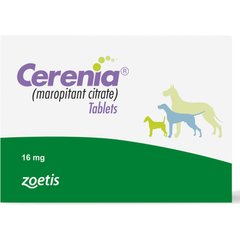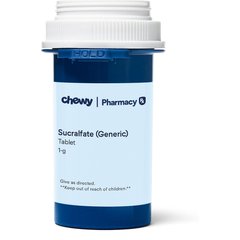Lily Poisoning in Cats: What To Do If Your Cat Ingests a Lily Flower
iStock/Ruslana Chub
Colorful, unique, and fragrant, lilies are one of the most popular flowers in the world. They’re frequently displayed around Easter and Mother’s Day but are often included in flower arrangements year-round.
While harmless to people, lilies are extremely poisonous and potentially fatal to cats. Households with cats should not have lilies inside the home or in the yard where cats can get near them.
Health Tools
Not sure whether to see a vet?
Are Lilies Toxic to Cats?
Yes, lilies are toxic to cats. Many kinds of plants have “lily” as part of their name, but not all contain the same toxins.
Two species of toxic lilies are especially dangerous: true lilies (Lilium species) and daylilies (Hemerocallis species), which can both cause kidney failure in cats.
While the exact toxin has not been identified, exposure to any part of the plant can cause sudden kidney failure, neurological signs, and other serious problems in cats.
Ingesting just small pieces of the petals, leaves, or even the pollen or water in the vase can result in severe, potentially irreversible and fatal kidney failure.
Lilies listed from MOST to LEAST toxic to cats:
- True Lilies—Lilium sp.
-
Asiatic lily
-
Easter lily
-
Japanese show lily
-
Oriental lily
-
Rubrum lily
-
Stargazer lily
-
Tiger lily
-
Wood lily
-
-
Daylily—Hemerocallis sp.
-
Lily of the Valley: This type of lily contains a cardiotoxin that is poisonous to your cat’s heart function, causing abnormal heart rhythms (arrhythmias) and even death.
-
Gloriosa, Flame Lily: The toxic agent in the Gloriosa, or flame lily, is colchicine, which is toxic to rapidly dividing cells in the body, which can cause multiorgan failure in cats that chew on them.
-
Calla Lily and Peace Lily: Despite having "lily" in their name, the peace lily and calla lily are not true lilies and do not cause kidney failure in cats. These plants do, however, contain oxalate crystals that can cause milder signs, such as irritation in the mouth, tongue, throat, and esophagus and vomiting.
-
Peruvian Lily: The least toxic of all lily plants is the Peruvian lily, which can cause mild stomach upset.
What Are the Signs of Lily Poisoning in Cats?
With true lilies and day lilies, signs of toxicity can occur within two hours of ingestion, and fatal kidney failure can develop in less than 72 hours. With other types of lily ingestion, symptoms may develop immediately or over the course of hours to days.
Keep in mind that the exact signs that emerge depend on what type of lily is involved and how much a cat ingests.
General signs of lily poisoning in cats:
-
Not eating, decreased appetite
-
Lethargy, decreased activity
-
Excessive thirst or lack of thirst
-
Excessive urination or not peeing at all
-
Disorientation
-
Dehydration, dry mouth, a dull coat, and sunken eyes
-
Tremors, seizures
-
Inability to walk, weakness
-
Ulcers or sores in the mouth/gums
-
Fast heartbeat
-
Low blood pressure
-
Coma, death
Immediate:
-
Drooling, foaming
-
Vomiting
-
Pawing at the face (mouth pain)
-
Vocalizing
First 12 hours:
-
Diarrhea
-
Not eating, decreased appetite
-
Lethargy, decreased activity
-
Fast heartbeat
-
Low blood pressure
-
Ulcers or sores on the gums
12–24 hours:
-
Kidney damage starts to develop (daylilies and true lilies)
-
Increased thirst
-
Increased frequency of urination
-
Dehydration
-
Depression
-
Tremors
24+ hours:
-
Kidney damage can be fatal, and neurologic signs develop (daylilies and true lilies)
-
Seizures
-
Lack of urination
-
Disorientation
-
Inability to walk
-
Coma
-
Death
There is no antidote for lily poisoning in cats. if it's detected early, your vet can provide supportive care to manage symptoms and provide your cat with the best chance of recovery.
What To Do if Your Cat Has Eaten a Lily
If you think that your cat could have ingested any part of a lily plant, gotten pollen on their coat or in their mouth, or drunk the water from the vase, call the Pet Poison Helpline at 855-764-7661 and take your cat directly to the veterinarian’s office or an emergency vet as soon as possible.
If possible, bring the plant with you to the veterinarian so they can identify the lily and offer the best treatment for your cat.
If you have cats in the house and you find a chewed-on lily plant, your cat should be examined by their veterinarian as soon as possible as well.
If they get any pollen on their skin, a bath will be needed to help reduce contamination, but this is best done at your vet’s office. The sooner treatment is started with a veterinarian, the better their prognosis for recovery.
How Vets Treat Lily Poisoning in Cats
While there is no antidote for this poisoning, if it is detected early, your vet can provide supportive care to manage symptoms and provide your cat with the best chance of recovery.
If your cat recently ingested any part of the lily plant, generally within two hours, and has not vomited, your veterinarian will probably try to induce vomiting. Activated charcoal is also given by mouth to help absorb any toxins that might remain in your cat’s gut.
Additional measures to treat lily poisoning in cats may include:
-
Baseline lab work, including a complete blood count (CBC), serum chemistry profile, and urinalysis are all important to evaluate your cat’s organ status, most importantly the kidneys.
-
IV fluids are the most important treatment, as they help support kidney function and prevent dehydration and electrolyte disturbances. These fluids should be given for a minimum of 48–72 hours while monitoring the amount of urine they are producing, which might require your cat to have a urinary catheter in place.
-
Supportive care and other treatments such as anti-nausea medications (Cerenia, for example) or stomach protectants like sucralfate might be needed as well.
-
Regular blood draws will be needed during hospitalization to monitor their kidney function. If your cat is not producing enough urine, that is a sign that the kidneys are shutting down and treatment might not be successful.
Can Cats Survive Lily Poisoning?
Unfortunately, even with aggressive treatment, there is no guarantee that your cat will survive a lily ingestion toxicity. Early veterinary treatment significantly improves your cat’s prognosis.
If treatment is delayed after a large ingestion, your cat will likely have irreversible kidney damage. In the later stages of kidney failure, approximately 24–48 hours after ingestion, if your cat stops urinating, this carries a very poor prognosis of survival.
If treatment is initiated within 48 hours of ingestion, your cat has a good chance for survival. If your cat survives a lily poisoning, they will need to have regular checkups and bloodwork after they are hospitalized to ensure that the kidneys are recovering.
Because lilies are so dangerous for cats and there’s a high risk of death if they’re ingested, it’s best to not bring these plants into your home if you have a cat and opt for cat-safe plants instead. It’s also best if you don’t plant them in your garden if your cat goes outside or if your neighbors have outdoor cats.
Lily Poisoning in Cats FAQs
Are lilies toxic to cats?
Yes, some types of lilies—including true lilies (Lilium sp.) and day lilies (Hemerocallis sp.)—are extremely toxic to cats and can quickly lead to fatal kidney failure. Other types of lilies can also be dangerous.
How long does it take for a lily to make a cat sick?
Some types of lilies can lead to immediate clinical signs like mouth pain and vomiting. In other cases, vomiting and lethargy make take a few hours to develop, followed by changes in thirst and urination, unsteadiness, tremors, and seizures.
What is the survival rate of lily poisoning in cats?
A cat’s prognosis depends on what type of lily they ingested and how quickly they receive treatment. One study showed that most cats who are treated aggressively withing 48 hours of ingesting lilies can survive.


